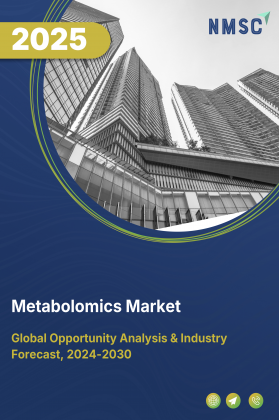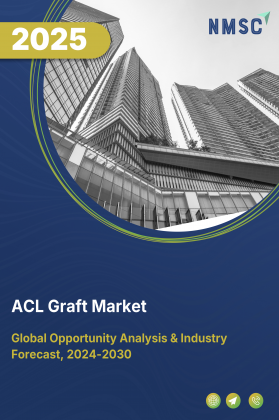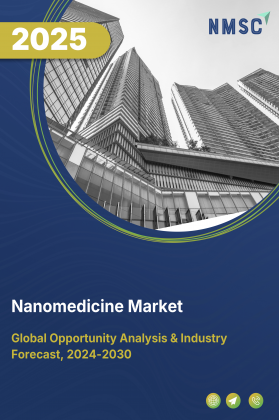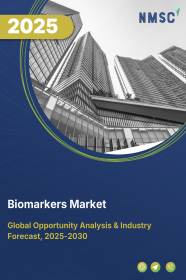
Metabolomics Market by Product (Metabolomic Instruments, Metabolomic Bioinformatics Tools and Services), by Technology (Mass Spectrometry-based Metabolomics, Chromatography), by Indication (Cardiovascular Disorders, Neurological Disorders, Others), by Application (Biomarker Discovery and Diagnostics, Drug Discovery and Development), and by End User (Pharmaceutical and Biotechnology Companies, Academic and Research Institutes) – Global Opportunity Analysis and Industry Forecast 2025–2030.
Industry Overview
The global Metabolomics Market size was valued at USD 4.05 billion in 2024 and is estimated to reach USD 4.64 billion in 2025 and is predicted to reach USD 9.22 billion by 2030 with a CAGR of 14.7% from 2025-2030.
The market is experiencing robust growth, driven by the rising burden of chronic diseases, rapid technological advancements, and the expanding focus on precision medicine. Increasing prevalence of conditions such as cancer, diabetes, and cardiovascular disorders is fueling demand for advanced diagnostic and therapeutic tools, with metabolomics offering detailed metabolic profiling and biomarker identification for early detection and personalized treatment.
Innovations in mass spectrometry, NMR spectroscopy, and chromatography are enhancing accuracy, sensitivity, and efficiency, while the integration of AI and machine learning is unlocking new possibilities in data analysis, drug discovery, and predictive healthcare.
However, high implementation costs, including expensive instrumentation, maintenance, and specialized expertise, remain a barrier to wider adoption. Overall, growing applications across clinical diagnostics, pharmaceutical R&D, and preventive medicine position metabolomics as a key enabler of next-generation healthcare solutions.
Rising Chronic Disease Burden Drives the Market Growth
The rising prevalence of chronic diseases, such as diabetes, cardiovascular disorders, cancer, obesity, and neurological conditions is a major driver of the metabolomics market growth. According to the World Health Organization (WHO) in 2024, global cancer cases are projected to exceed 35 million by 2050, a 77% increase from around 20 million in previous years, underscoring the urgent need for advanced healthcare solutions.
Metabolomics meets this need by delivering detailed metabolic profiles and identifying disease-specific biomarkers, enabling early detection, precise monitoring, and personalized treatment. This capability supports precision medicine, accelerates drug development, and enhances disease management.
As healthcare systems respond to the growing burden of chronic illnesses, demand for metabolomics-based diagnostics and research tools is rapidly increasing, fueling strong industry growth and reinforcing its role in future targeted and preventive healthcare.
Technological Innovations Enhancing Metabolomics Accuracy and Accessibility
Advancements in analytical technologies are a major driver of the metabolomics market demand as continuous improvements in tools such as mass spectrometry (MS), nuclear magnetic resonance (NMR) spectroscopy, and chromatography have significantly enhanced the accuracy, sensitivity, and throughput of metabolic profiling. These technological innovations enable researchers to detect and quantify a broader range of metabolites, even at very low concentrations, and to process large sample volumes more efficiently.
Enhanced automation, miniaturization, and integration with bioinformatics platforms have further streamlined workflows, reducing analysis time and costs. As a result, metabolomics is becoming more accessible and reliable for applications in clinical diagnostics, biomarker discovery, drug development, and personalized medicine, fueling wider adoption across pharmaceutical, biotechnology, and academic research sectors.
Growing Focus on Precision Medicine Boosts the Market Expansion
Growing focus on precision medicine is a significant driver of the market expansion, as healthcare is shifting from a one-size-fits-all approach to treatments tailored to an individual’s unique biological profile. Metabolomics plays a crucial role in this transition by providing comprehensive insights into a patient’s metabolic state, identifying disease-specific biomarkers, and revealing how genetic, environmental, and lifestyle factors influence health.
These metabolic signatures help clinicians select the most effective therapies, monitor treatment responses in real time, and predict potential side effects, ultimately improving patient outcomes. As precision medicine initiatives expand globally, supported by government programs, research collaborations, and pharmaceutical investment, the demand for metabolomics technologies is rising sharply, solidifying their role as an essential tool for personalized diagnostics and targeted therapeutics.
High Implementation Costs Limits Wider Adoption of Metabolomics
High cost of metabolomics technologies is a notable restraint on the market growth. Advanced analytical instruments such as mass spectrometers, NMR spectrometers, and chromatography systems require substantial capital investment, amounting to hundreds of thousands of dollars. In addition to equipment expenses, there are significant costs associated with maintenance, skilled personnel, data analysis software, and consumables. These financial barriers limit adoption, particularly in small research laboratories, academic institutions, and in developing economies with constrained healthcare and R&D budgets.
Furthermore, the complexity of data interpretation requires specialized expertise, adding to operational costs. As a result, while demand for metabolomics applications is growing, the high cost of entry continues to hinder wider implementation across potential end users.
AI and Machine Learning Integration Unlocks New Potential in Metabolomics
Integration of metabolomics with artificial intelligence (AI) and machine learning (ML) presents a significant opportunity for the market. The vast and complex datasets generated by metabolomics require advanced analytical tools for meaningful interpretation, and AI/ML algorithms uncover hidden patterns, predict disease risks, and identify novel biomarkers with unprecedented accuracy.
By combining metabolomics with AI-driven analytics, researchers accelerate drug discovery, improve diagnostic precision, and enable real-time patient monitoring in clinical settings. This integration also supports the development of predictive models for personalized medicine, enhancing treatment outcomes. As AI technologies mature and become more accessible, their application in metabolomics is expected to expand rapidly, unlocking new possibilities in healthcare, pharmaceutical R&D, and preventive medicine.
Market Segmentations and Scope of the Study
The metabolomics market report is segmented by product, technology, indication, application, end user and region. By product, it includes metabolomic instruments and metabolomic bioinformatics tools and services. By technology, it comprises mass spectrometry-based metabolomics, NMR spectroscopy-based metabolomics, chromatography, and others. By indication, it covers cardiovascular disorders, inborn errors of metabolism, cancer, neurological disorders, and others. By application, it includes biomarker discovery and diagnostics, drug discovery and development, personalized medicine, nutrition and nutraceuticals, agriculture and environmental sciences, microbial metabolomics, and others. By end user, the market is divided into pharmaceutical and biotechnology companies, academic and research institutes, clinical and diagnostic laboratories, contract research organizations, agricultural and environmental organizations, and the food and beverage industry. The regional breakdown includes regions such as North America, Europe, Asia-Pacific, and the Rest of the World (RoW).
Geographical Analysis
The rising prevalence of chronic and lifestyle-related diseases is a key driver of the metabolomics market share in North America. According to the Centers for Disease Control and Prevention (CDC) in 2025, approximately 6 in 10 young adults, 8 in 10 midlife adults, and 9 in 10 older adults in the U.S. report having one or more chronic conditions, highlighting the significant health burden across all age groups.
This growing incidence of disorders such as obesity, diabetes, cardiovascular diseases, and cancer is fueling the demand for advanced diagnostic and treatment solutions. Metabolomics addresses this need by enabling early disease detection, precise monitoring, and personalized therapy selection, making it an increasingly vital tool in managing the region’s escalating chronic disease challenge.
Europe’s growing investment in precision medicine initiatives is a significant driver of the market in the region. Many European countries are channeling substantial resources into national and cross-border programs aimed at improving disease prevention, diagnosis, and treatment through personalized approaches.
Metabolomics plays a central role in these initiatives by providing detailed metabolic insights that enable the identification of disease-specific biomarkers, prediction of treatment responses, and optimization of therapeutic strategies. Strong collaboration between academic institutions, healthcare providers, and biotechnology companies, coupled with supportive funding from the European Union’s Horizon Europe program and other regional grants, is accelerating research and clinical adoption. This focus on precision healthcare is boosting demand for metabolomics technologies across the continent, particularly in oncology, cardiovascular care, and rare disease management.
Growth of the pharmaceutical industry is a key driver of the sector in Asia-Pacific, supported by rapid expansion in drug discovery and development activities across the region. According to the India Brand Equity Foundation (IBEF) in 2025, India’s pharmaceuticals industry is expected to reach USD 130 billion by 2030, reflecting the region’s accelerating healthcare and R&D capabilities.
Countries like China, India, Japan, and South Korea are investing heavily in pharmaceutical innovation, driving demand for advanced analytical tools such as metabolomics to identify biomarkers, optimize drug targets, and assess efficacy and safety. With cost-effective manufacturing, a growing pool of skilled researchers, and supportive government policies, Asia-Pacific’s thriving pharmaceutical ecosystem is fostering the widespread adoption of metabolomics technologies in both clinical and research applications.
Rising investment in healthcare infrastructure is a notable driver of the market in the Rest of the World, particularly in regions such as the Middle East, Africa, and Latin America. Many countries are increasing healthcare budgets and modernizing medical facilities to improve diagnostic and treatment capabilities. This expansion is creating opportunities for the adoption of advanced technologies like metabolomics, which enhance disease detection, support precision medicine, and improve patient outcomes.
Growing collaborations with international research institutions and pharmaceutical companies are further facilitating technology transfer and skill development, enabling these regions to integrate metabolomics into clinical diagnostics and biomedical research. As healthcare infrastructure strengthens, the demand for innovative, data-driven diagnostic tools is expected to rise significantly.
Strategic Innovations Adopted by Key Players
Key players in the metabolomics industry are actively driving innovation through advanced product launches, integrated multiomics solutions, and specialized analytical platforms to enhance research capabilities and address complex biological questions.
-
In June 2025, Agilent unveiled the InfinityLab Pro iQ Series at ASMS 2025, advancing LC-MS detection with intelligent systems tailored for therapeutic small molecules and biomolecules.
-
In May 2025, Agilent also launched the Seahorse XF Flex Analyzer, enhancing real-time metabolic analysis in 3D tissue and organoid research setups.
-
In April 2025, Metabolon launched a microbiome research solution that combined a new microbiome metabolite panel, metagenomics sequencing, and multiomics bioinformatics tools, offering powerful integrated insights into microbiome function and host interactions.
-
In October 2024, Metabolon launched guide to multiomics that includes the integration of metabolomics with other omics data types such as genomics and transcriptomics. This integration enhanced the understanding of biological systems and diseases, highlighting its role in biomarker discovery and disease monitoring.
Key Benefits
-
The report provides quantitative analysis and estimations of the industry from 2025 to 2030, which assists in identifying the prevailing market opportunities.
-
The study comprises a deep-dive analysis of the current and future metabolomics market trends to depict prevalent investment pockets in the industry.
-
Information related to key drivers, restraints, and opportunities and their impact on the industry is provided in the report.
-
Competitive analysis of the key players, along with their market share is provided in the report.
-
SWOT analysis and Porters Five Forces model is elaborated in the study.
-
Value chain analysis in the market study provides a clear picture of roles of stakeholders.
Metabolomics Market Key Segments
By Product
-
Metabolomic Instruments
-
Metabolomic Bioinformatics Tools and Services
By Technology
-
Mass Spectrometry-based Metabolomics
-
LC-MS
-
GC-MS
-
Others
-
-
NMR Spectroscopy-based Metabolomics
-
High-resolution NMR
-
Benchtop NMR
-
-
Chromatography
-
Gas Chromatography
-
Liquid Chromatography
-
-
Others
By Indication
-
Cardiovascular Disorders
-
Inborn Errors of Metabolism
-
Cancer
-
Neurological Disorders
-
Others
By Application
-
Biomarker Discovery & Diagnostics
-
Drug Discovery & Development
-
Pharmacometabolomic
-
Toxicology Studies
-
-
Personalized Medicine
-
Nutrition & Nutraceuticals
-
Agriculture & Environmental Sciences
-
Microbial Metabolomics
-
Others
By End User
-
Pharmaceutical & Biotechnology Companies
-
Academic & Research Institutes
-
Clinical & Diagnostic Laboratories
-
Contract Research Organizations (CROs)
-
Agricultural & Environmental Organizations
-
Food & Beverage Industry
By Region
-
North America
-
The U.S.
-
Canada
-
Mexico
-
-
Europe
-
The UK
-
Germany
-
France
-
Italy
-
Spain
-
Denmark
-
Netherlands
-
Finland
-
Sweden
-
Norway
-
Russia
-
Rest of Europe
-
- Asia-Pacific
-
China
-
Japan
-
India
-
South Korea
-
Australia
-
Indonesia
-
Singapore
-
Taiwan
-
Thailand
-
Rest of Asia-Pacific
-
-
RoW
-
Latin America
-
Middle East
-
Africa
-
Key Players
-
Waters Corporation
-
DH Life Sciences, LLC
-
Bruker
-
Metabolon, Inc.
-
LECO Corporation
-
Shimadzu Corporation
-
Human Metabolome Technologies America Inc.
-
SCIEX
-
Eurofins Discovery
-
Promega Corporation
-
Phenomenex Inc.
-
Cambridge Isotope Laboratories, Inc.
-
Biocrates life sciences ag
Report Scope and Segmentation
|
Parameters |
Details |
|
Market Size in 2025 |
USD 4.64 Billion |
|
Revenue Forecast in 2030 |
USD 9.22 Billion |
|
Growth Rate |
CAGR of 14.7% from 2025 to 2030 |
|
Analysis Period |
2024–2030 |
|
Base Year Considered |
2024 |
|
Forecast Period |
2025–2030 |
|
Market Size Estimation |
Billion (USD) |
|
Growth Factors |
|
|
Countries Covered |
28 |
|
Companies Profiled |
15 |
|
Market Share |
Available for 10 companies |
|
Customization Scope |
Free customization (equivalent up to 80 working hours of analysts) after purchase. Addition or alteration to country, regional, and segment scope. |
|
Pricing and Purchase Options |
Avail customized purchase options to meet your exact research needs. |

















 Speak to Our Analyst
Speak to Our Analyst

























